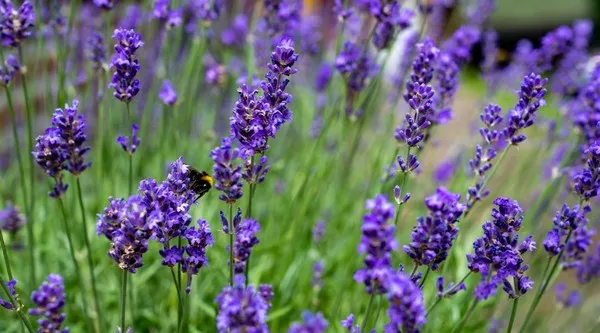Spiders are fascinating creatures that play a crucial role in maintaining the ecological balance by controlling insect populations. However, their presence in and around our homes can sometimes be unsettling. For those who wish to minimize spider encounters without resorting to harmful chemicals, exploring natural repellents like certain flowers can be an effective strategy. In this article, we delve into the realm of flowers that repel spiders, shedding light on their benefits, scientific basis, and other related insights.
The Power of Natural Repellents
Natural repellents have gained popularity as environmentally friendly alternatives to chemical solutions. Flowers, in particular, have been recognized for their potential to repel spiders and discourage their presence indoors. This method not only respects the delicate balance of nature but also enhances the aesthetics of living spaces.
Flowers That Repel Spiders
1. Lavender (Lavandula spp.)
Lavender, known for its aromatic beauty, is a well-regarded spider repellent. Its delightful scent is pleasant to humans but repels many insects, including spiders. The essential oils present in lavender, such as linalool and linalyl acetate, disrupt spiders’ sensory cues, deterring them from entering areas where the scent is prevalent.
2. Mint (Mentha spp.)
Mint, with its invigorating aroma, serves as a versatile spider deterrent. The strong scent of mint overwhelms spiders’ senses, discouraging them from setting up their webs in mint-rich surroundings. This makes mint a valuable addition to gardens and indoor spaces alike.
3. Eucalyptus (Eucalyptus spp.)
Eucalyptus, widely recognized for its medicinal properties, also possesses spider-repelling qualities. Its essential oil contains compounds like cineole that spiders find offensive. By placing eucalyptus arrangements strategically, one can create a spider-resistant environment.
4. Chrysanthemum (Chrysanthemum spp.)
Chrysanthemums are not only visually appealing but also effective at deterring spiders. These flowers contain pyrethrin, a natural insecticide commonly used in pest control products. While being a stunning garden addition, chrysanthemums act as a barrier against spiders and other insects.
5. Citrus (Citrus spp.)
Citrus plants, including lemon and orange trees, offer more than just fruit-bearing delight. The high content of limonene in their peels emits a scent that spiders find repugnant. Placing citrus plants near entrances and windows can act as a formidable defense against arachnid intruders.
Scientific Basis of Flower Repellents
The effectiveness of flowers in repelling spiders may seem anecdotal, but there is scientific reasoning behind this phenomenon. Many flowers, as mentioned earlier, contain compounds like essential oils that emit fragrances spiders dislike. These compounds interfere with spiders’ chemosensory perception, disrupting their ability to locate prey and detect danger.
Spiders, like many insects, rely heavily on their sense of smell to navigate their environment. They use specialized structures called chemoreceptors to detect volatile compounds in the air. When exposed to repellent compounds from flowers, spiders’ receptors send signals to their nervous system, triggering avoidance behaviors. This natural aversion drives spiders away from areas infused with the repelling scent.
Creating a Spider-Repelling Environment
Incorporating spider-repelling flowers into your surroundings requires thoughtful planning. Here are some key points to consider:
1. Strategic Plant Placement
Plant flowers like lavender, mint, and eucalyptus near entryways, windows, and outdoor sitting areas. Spiders often enter through these points, and the scent of these flowers will act as a deterrent.
2. Diversified Plant Selection
Combining multiple types of repellent flowers can enhance the effectiveness of your spider control strategy. A diverse range of scents will cover a broader spectrum of spider species.
3. Regular Maintenance
Proper care and maintenance of your repellent plants are essential to keep them healthy and fragrant. Pruning, watering, and providing adequate sunlight will ensure a consistent release of spider-repelling scents.
4. Indoor Potted Plants
For indoor spider control, consider keeping potted versions of repellent flowers. This can be especially useful in areas where planting outdoor gardens is not feasible.
Beyond Flowers: Additional Strategies
While flowers offer a fragrant solution to spider concerns, there are other strategies to complement their repellent effects:
1. Decluttering
Reducing clutter in and around your living spaces minimizes hiding spots for spiders. Regular cleaning and removal of cobwebs also discourage their presence.
2. Natural Predators
Encouraging natural predators like birds, frogs, and certain insect species can help keep spider populations in check.
3. Sealing Entry Points
Inspect your home for gaps, cracks, and openings that spiders could use as entry points. Sealing these openings denies spiders access to your living spaces.
Conclusion
In the quest to coexist peacefully with nature, the utilization of flowers as spider repellents presents an elegant and effective solution. Their aromatic beauty not only enhances our surroundings but also offers a natural defense against arachnid intruders. By understanding the science behind flower-based repellents and implementing complementary strategies, we can create spaces that are both aesthetically pleasing and spider-resistant. Embracing these natural solutions aligns with sustainable practices and promotes harmony between humans and the intricate ecosystems we share.


